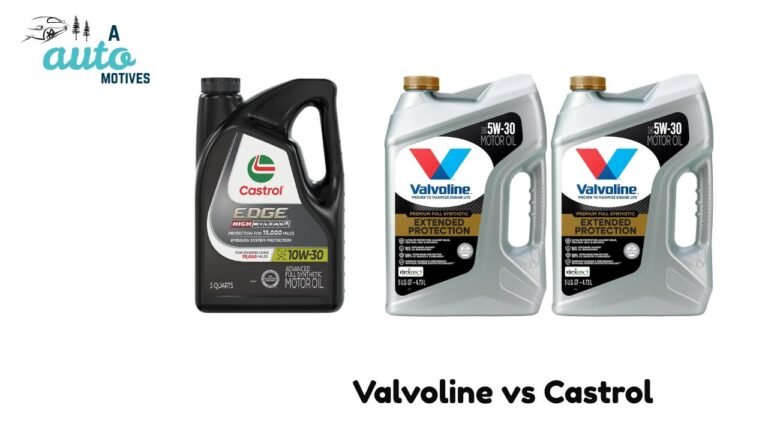How to Know If Your Car Has Too Much Oil

Let me tell you a quick story.
It was the middle of a humid July afternoon in Dhaka. My cousin Rahat had just changed his engine oil himself—feeling pretty proud of doing it without a mechanic. Two days later, he called me in a panic.
“Bhai, my engine’s making a weird noise—like it’s choking.”
We popped the hood and checked the dipstick. The oil level was way above the max line. Yep, he had overfilled it. What started as a cost-saving DIY project nearly wrecked his engine.
Too much oil in your car may sound like a minor issue, but it can cause serious damage if ignored. Your engine is designed to operate with a certain amount of lubrication. When there’s too much oil, it throws off the balance—kind of like overeating and then trying to run a marathon.
In this guide, I’ll walk you through the real signs, the science behind it, and how you can easily check it yourself, even if you’ve never opened your car’s hood before.
By the end, you’ll know exactly how to know if your car has too much oil, and more importantly, what to do about it.
In This Article
- 1 Why Engine Oil Matters (And How Too Much Ruins Everything)
- 2 Main Signs Your Car Has Too Much Oil
- 3 Poor Engine Performance and Rough Idling
- 4 Dashboard Warning Lights: Don’t Ignore Them
- 5 Strange Engine Noises or Ticking Sounds
- 6 How Overfilling Happens (Even If You’re Careful)
- 7 Key Warning Signs
- 8 What Happens If You Keep Driving With Too Much Oil
- 9 How to Fix Too Much Oil in Your Car
- 10 How Much Oil Is “Too Much”? Let’s Be Precise
- 11 When to Call a Mechanic
- 12 FAQs: Your Questions Answered
- 12.1 1. Can too much oil damage my engine permanently?
- 12.2 2. How often should I check my oil level?
- 12.3 3. Can too much oil cause oil leaks?
- 12.4 4. Will an oil light come on if there’s too much oil?
- 12.5 5. Is it okay to drive a short distance with too much oil?
- 12.6 6. How long does it take for engine damage to show?
- 12.7 7. Can I use toilet paper or cloth to clean my dipstick?
- 12.8 8. How much oil does my car need exactly?
- 13 A Final Story: Better Safe Than Sorry
- 14 Final Thoughts: Take the Dipstick Seriously
Why Engine Oil Matters (And How Too Much Ruins Everything)

But just like high blood pressure, too much engine oil creates stress. It adds pressure where there shouldn’t be any. That extra oil can get whipped into foam by moving parts, losing its lubricating properties and causing overheating.
Here’s what excess oil can lead to:
-
Oil foaming (loss of lubrication)
-
Increased pressure inside engine seals
-
Burning oil smell
-
Damage to spark plugs
-
Catalytic converter failure
It’s not just about having clean oil. It’s about having the right amount.
Main Signs Your Car Has Too Much Oil

1. Thick White Smoke From the Exhaust
Have you ever seen a car puffing out thick white or bluish smoke from the exhaust like a steam engine? That’s not normal.
When there’s too much oil, it can seep into parts of the engine where it doesn’t belong—like the combustion chamber. When it burns there, it creates that dense smoke.
And no, it’s not just embarrassing when people stare—it’s a red flag that oil is going where it shouldn’t.
2. Burning Oil Smell
This is one of the most common symptoms. If your nose starts catching a hot, acrid smell while driving or idling, don’t ignore it.
Overfilled oil often leaks onto hot engine parts. It burns there and creates a smell that’s hard to miss. Some describe it as a mix between burnt toast and engine grease.
If you’re smelling this, stop the car safely and check the oil level immediately.
3. Oil Level Is Above the Max Mark
This is the clearest way to know if your car has too much oil. The dipstick never lies.
Here’s how to check:
-
Park on level ground and wait 10 minutes after turning off the engine.
-
Pull out the dipstick and wipe it clean.
-
Reinsert it fully, then pull it out again.
-
Look at the min and max lines.
If the oil is well above the max line, you’ve got a problem.
| Oil Level | What It Means |
|---|---|
| Below Min | Too little—add more |
| Between Min and Max | Perfect |
| Above Max | Too much oil – remove some |
Don’t drive long with the oil above the max line. It’s not worth the risk.
Poor Engine Performance and Rough Idling
You might notice your car isn’t responding the way it should. Maybe it’s jerky, takes longer to accelerate, or just sounds… off.
That can happen when excess oil starts affecting combustion efficiency. The spark plugs can get coated with oil, preventing clean ignition.
Rough idling—when your car shudders or vibrates while standing still—is another common symptom. The engine is essentially trying to breathe through thick oil fog.
It’s like trying to jog with a cloth over your mouth. Not fun. Not safe.
Dashboard Warning Lights: Don’t Ignore Them
Modern cars are smart. If your Check Engine Light or Oil Pressure Light comes on after an oil change, don’t assume it’s random.
Excess oil can confuse sensors or even damage them, causing your car to send out distress signals. Some people think, “Oh, it’s just a glitch.” But those lights are telling you something’s wrong—listen to them.
Pair the warning lights with other symptoms like weird noises or smoke, and it’s almost guaranteed that you’ve put too much oil in your car.
Strange Engine Noises or Ticking Sounds
Engines are usually quiet and consistent. If you start hearing ticking, knocking, or clunking noises, it’s time to worry.
Why? Because too much oil increases pressure inside the engine, and moving parts begin to push against oil they weren’t meant to touch. That makes parts like lifters and rods clatter around.
Think of it like splashing in a pool that’s overfilled. The water starts going everywhere and creates noise, chaos, and mess. That’s what’s happening inside your engine.
How Overfilling Happens (Even If You’re Careful)
You might be thinking: “But I only added a little extra. What’s the harm?”
Even a small overfill can cause problems. And here’s how it usually happens:
-
You don’t wait for oil to settle before checking the dipstick.
-
You misread the dipstick.
-
You forget to account for residual oil from the previous change.
-
You blindly follow generic advice online instead of checking your owner’s manual.
Tip: Always start by adding less than the recommended amount, then top up slowly while checking the dipstick.
Key Warning Signs
Here’s a quick checklist to help you know if your car has too much oil:
-
Burning oil smell
-
White or blue exhaust smoke
-
Engine sounds rough or noisy
-
Dashboard warning lights turn on
-
Poor acceleration or rough idling
-
Dipstick shows oil above the “max” mark
If two or more of these apply, don’t drive your car until you fix the issue.Table: Comparing Low, Normal, and Too Much Oil
| Condition | Symptoms | Action Needed |
|---|---|---|
| Low Oil | Engine overheating, noise, stalling | Add oil carefully |
| Normal Oil | Smooth operation, clean dipstick line | No action needed |
| Too Much Oil | Smoke, smell, rough idle, warning lights | Drain excess oil ASAP |
What Happens If You Keep Driving With Too Much Oil
Let me be honest. If you keep driving with too much oil, your car’s engine could be ruined beyond repair.
Foamed oil loses its lubrication ability. This causes friction and overheating. The crankshaft gets submerged in oil and starts whipping it around, stressing seals and gaskets. Worst case? You blow your head gasket or wreck the catalytic converter.
It’s not a slow death either. Some engines fail within just a few miles if they’re flooded with oil.
You wouldn’t ignore chest pain, right? Same logic here. If your car shows signs of too much oil, stop, check, and fix it.
How to Fix Too Much Oil in Your Car
So you’ve confirmed it: there’s too much oil in your car. Now what?
The good news is, if you act fast, you can fix it yourself. It’s like catching a cold before it turns into pneumonia.
There are three main ways to fix overfilled oil:
1. Use an Oil Extractor Pump
This is the cleanest method. You insert the small tube of the oil extractor into the dipstick tube and manually pump out oil into a container.
-
No need to crawl under the car
-
Great for small overfills (up to 500ml)
-
Can be reused
2. Drain Some Oil from the Oil Pan
This is a bit messier but more effective for larger overfills.
-
Find the drain plug under your engine.
-
Place a pan beneath it.
-
Loosen the plug slowly—don’t remove it completely.
-
Let out small amounts and check the dipstick after each drain.
Pro Tip: Wear gloves, and don’t forget to dispose of the oil properly.
3. Visit a Mechanic
If you’re not confident doing it yourself—or if your car is already showing smoke or noise—it’s best to get professional help. Especially for newer cars with turbocharged engines or hybrids, mistakes can be costly.
How Much Oil Is “Too Much”? Let’s Be Precise
A little above the max line isn’t ideal but might not destroy your engine right away. However, more than ½ quart (about 500 ml) above the max line is considered dangerous.
If your dipstick shows oil 1 inch or more above the max mark, that’s a red alert. Remove oil immediately.
| Excess Level | Risk Factor |
|---|---|
| Slightly above max | Low risk, but fix soon |
| ½ quart over | Medium risk – can cause foaming |
| 1 quart or more | High risk – can damage engine |
When to Call a Mechanic
Here’s when to stop trying DIY and go straight to a garage:
-
Your car won’t start or stalls after an oil change
-
There’s white smoke coming out the back for more than 1 minute
-
You hear loud tapping or knocking sounds
-
Oil is leaking onto the exhaust manifold
-
The Check Engine Light flashes repeatedly
Don’t take risks. Fixing a blown engine is way more expensive than paying a mechanic for a quick oil adjustment.
FAQs: Your Questions Answered
1. Can too much oil damage my engine permanently?
Yes. Prolonged exposure to excess oil can cause severe engine damage, including failed gaskets, cracked cylinders, or a burned catalytic converter.
2. How often should I check my oil level?
Check it once every two weeks, or before any long trip. Always check after an oil change too.
3. Can too much oil cause oil leaks?
Absolutely. High oil pressure stresses seals and gaskets, which can cause leaks around the engine block.
4. Will an oil light come on if there’s too much oil?
Not always. Oil pressure lights are more sensitive to low oil, but some cars may trigger Check Engine Lights if sensors are affected by foamed or leaking oil.
5. Is it okay to drive a short distance with too much oil?
If it’s only slightly over the line, you might be okay for a few kilometers. But any farther than that could risk engine damage. Always err on the side of caution.
6. How long does it take for engine damage to show?
Sometimes just a few minutes of driving can lead to irreversible damage, especially in modern engines.
7. Can I use toilet paper or cloth to clean my dipstick?
Yes, but make sure it’s lint-free. You don’t want fibers getting into the oil chamber.
8. How much oil does my car need exactly?
It varies. Check your owner’s manual. Most cars need between 3.5 to 5 quarts (3.3 to 4.7 liters).
A Final Story: Better Safe Than Sorry
Let me share a quick final story—this time, mine.
In 2021, I had just bought a used Toyota Premio. After a rainy day drive, I checked the oil and panicked. I thought it was low (rainwater illusion), so I added half a liter. Guess what? A week later, thick white smoke began curling from the tailpipe.
I was lucky—I caught it early. But had I kept driving, I might have needed a new catalytic converter.
Sometimes, car problems don’t show up as loud bangs. They whisper. And too much oil whispers through a foggy exhaust, subtle engine grunts, or a faint smell of burn.
Final Thoughts: Take the Dipstick Seriously
Knowing how to tell if your car has too much oil isn’t just a mechanical skill—it’s a way to protect your investment, your wallet, and your peace of mind.
Modern engines are sensitive. One small mistake can snowball into a disaster.
Here’s what you should always remember:
-
Always check the oil level after a change.
-
Don’t top up unless the dipstick confirms it.
-
If something smells, smokes, or knocks—stop the car.
-
Don’t wait for a breakdown to learn the hard way.
Caring for your car is like caring for your health. You don’t need to be a doctor to know when something feels off—you just need to listen and act.






